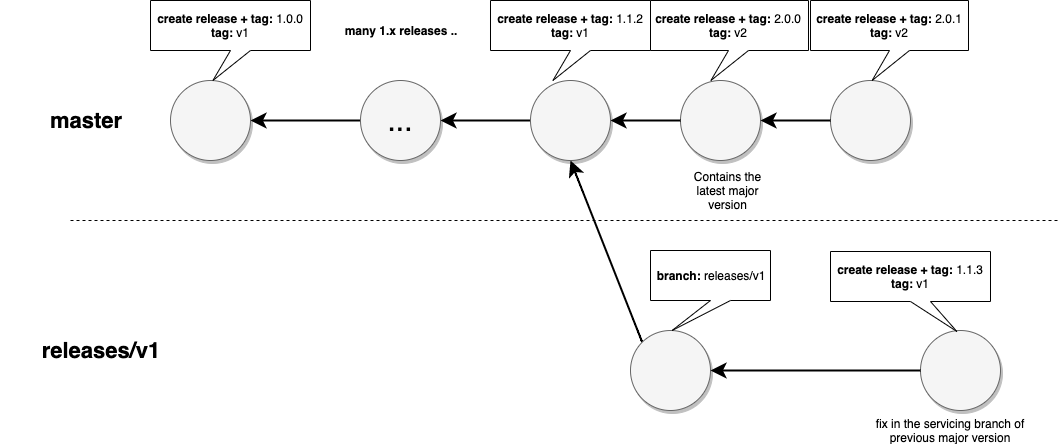3.7 KiB
Versioning
Actions are downloaded and run from the GitHub graph of repos. The workflow references an action using a ref.
Examples:
steps:
- uses: actions/javascript-action@v1 # recommended. starter workflows use this
- uses: actions/javascript-action@v1.0.0 # if an action offers specific releases
- uses: actions/javascript-action@41775a4da8ffae865553a738ab8ac1cd5a3c0044 # sha
Compatibility
Binding to a major version is the latest of that major version ( e.g. v1 == "1.*" )
Major versions should guarantee compatibility. A major version can add net new capabilities but should not break existing input compatibility or break existing workflows.
Major version binding allows you to take advantage of bug fixes and critical functionality and security fixes. The main branch has the latest code and is unstable to bind to since changes get committed to main and released to the market place by creating a tag. In addition, a new major version carrying breaking changes will get implemented in main after branching off the previous major version.
Warning: do not reference
mainsince that is the latest code and can be carrying breaking changes of the next major version.
steps:
- uses: actions/javascript-action@main # do not do this
Binding to the immutable full sha1 may offer more reliability. However, note that the hosted images toolsets (e.g. ubuntu-latest) move forward and if there is a tool breaking issue, actions may react with a patch to a major version to compensate so binding to a specific SHA may prevent you from getting fixes.
Recommendation: bind to major versions to get functionality and fixes but reserve binding to a specific release or SHA as a mitigation strategy for unforeseen breaks.
Recommendations
-
Create a GitHub release for each specific version: Creating a release like v1.0.0 allows users to bind back to a specific version if an issue is encountered with the latest major version.
-
Publish the specific version to the marketplace: When you release a specific version, choose the option to "Publish this Action to the GitHub Marketplace".

- Make the new release available to those binding to the major version tag: Move the major version tag (v1, v2, etc.) to point to the ref of the current release. This will act as the stable release for that major version. You should keep this tag updated to the most recent stable minor/patch release.
git tag -fa v1 -m "Update v1 tag"
git push origin v1 --force
Major Versions
All releases for a major version should hold compat including input compatibility and behavior compatibility.
Introduce a major version for compatibility breaks and major rewrites of the action.
Ideally, a major version would carry other benefits to the user to entice them to upgrade their workflows. Since updating their workflows will need to be done with an understanding of the changes and what compatibility was broken, introducing a new major version shouldn't be taken lightly.
To get feedback and to set expectations, the new major version can be initially released with v2-beta tag to indicate you can try it out but it's still going under some churn. Upon release the -beta can be dropped and there's an expectation of compatibility from that point forward.
An example of v2-beta with checkout
Sample Workflow
This illustrates the versioning workflow covered above.
